BY BRIG GURMEET KANWAL (RETD)
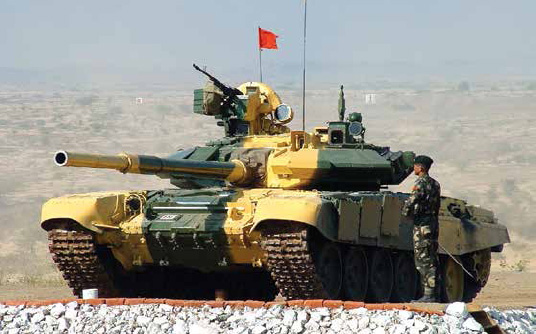 EMPHASIS ON MAKE IN INDIA: Since it was voted to power in May 2014, Prime Minister Narendra Modi’s NDA government has accorded approval to defence procurement projects worth Rs 1,50,000 crore. In an interview with the author, Mr. Manohar Parrikar, the former Defence Minister, had said that contracts worth Rs 90,000 crore had been signed and of these 70 percent are in the categories to ‘buy and make in India’ or ‘make in India’. After a decade of stagnation under the two UPA regimes, military modernisation appears to be gaining momentum once again under the new government. And, there is a distinct push towards realising the PM’s directions to make in India.
EMPHASIS ON MAKE IN INDIA: Since it was voted to power in May 2014, Prime Minister Narendra Modi’s NDA government has accorded approval to defence procurement projects worth Rs 1,50,000 crore. In an interview with the author, Mr. Manohar Parrikar, the former Defence Minister, had said that contracts worth Rs 90,000 crore had been signed and of these 70 percent are in the categories to ‘buy and make in India’ or ‘make in India’. After a decade of stagnation under the two UPA regimes, military modernisation appears to be gaining momentum once again under the new government. And, there is a distinct push towards realising the PM’s directions to make in India.
General Dalbir Singh Suhag, the previous COAS, had said, “Force modernisation incorporating contemporary technologies is a key priority…. Making up of critical deficiencies of weapons and equipment is on fast track.” One year before the NDA government assumed office, it had been reported that, “The army is finally cranking up its modernisation drive, with around 680 procurement projects worth over Rs 200,000 crore for the 12th Plan (2012-17) period, to plug operational gaps as well as ensure ‘capability development’ along both the western and eastern fronts.” General Bikram Singh, General Dalbir Singh’s predecessor, had identified 31 of these 680 pending modernisation projects as Priority-1. These included assault rifles, howitzers, bullet-proof jackets, tank and artillery ammunition and missiles.
 According to a recent news report, “17 new contracts worth Rs 2,820 crore were signed for the Army in 2011-2012. The figure jumped to 29 contracts worth Rs 7,222 crore in 2012-2013. The tally stands at 17 contracts worth Rs 11,777 crore in the ongoing fiscal. Another 23 contracts, worth around Rs 12,000 crore, are in the pipeline. The important ones include the over Rs 2,000 crore deal for 15,000 3UBK Invar missiles for T-90S tanks and the Rs 1,200 crore one for two additional “troops” of the Israeli Heron spy drones. The really critical projects are still stuck in the long-winded procurement process.” These include those for the infantry: bullet-proof jackets, ballistic helmets, new-generation assault rifles with interchangeable barrels, close-quarter battle carbines and light machine guns have all been hanging fire for several years.
According to a recent news report, “17 new contracts worth Rs 2,820 crore were signed for the Army in 2011-2012. The figure jumped to 29 contracts worth Rs 7,222 crore in 2012-2013. The tally stands at 17 contracts worth Rs 11,777 crore in the ongoing fiscal. Another 23 contracts, worth around Rs 12,000 crore, are in the pipeline. The important ones include the over Rs 2,000 crore deal for 15,000 3UBK Invar missiles for T-90S tanks and the Rs 1,200 crore one for two additional “troops” of the Israeli Heron spy drones. The really critical projects are still stuck in the long-winded procurement process.” These include those for the infantry: bullet-proof jackets, ballistic helmets, new-generation assault rifles with interchangeable barrels, close-quarter battle carbines and light machine guns have all been hanging fire for several years.
Enhancing the Combat Power of the Mechanised Forces
While Pakistan has acquired 320 T-80 UD tanks and is on course to add Al Khalid tanks that it has co-developed with China to its armour fleet, vintage tanks continue in the Indian army’s inventory despite their obsolescence. Even though the indigenously developed Arjun MBT has not fully met the army’s expectations due to recurring technological problems and cost over-runs, the tank has entered serial production to equip two regiments and orders for a few more may be placed soon. Consequently, 310 T-90S MBTs had to be imported from Russia. In December 2007, a contract was signed for an additional 347 T-90 tanks to be assembled in India. Meanwhile, a programme has been launched to modernise the T-72 M1 Ajeya MBTs that have been the mainstay of the army’s Strike Corps and their armoured divisions since the 1980s. The programme seeks to upgrade the night fighting capabilities and fire control system of the tank, among other modifications. Approximately 1,700 T-72 M1s have been manufactured under license at the Heavy Vehicle Factory (HVF), Avadi.
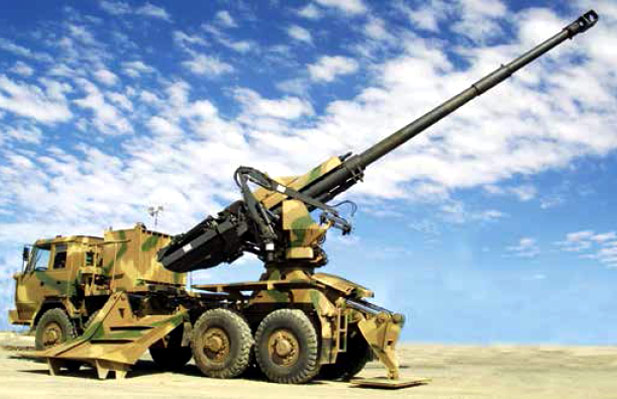 The BMP-1 and the BMP-2 infantry combat vehicles, which have been the mainstay of the mechanised infantry battalions for long, are now ageing and replacements need to be found soon. A project to build 2,600 Future Infantry Combat Vehicles (FICV) costing approximately Rs 60,000 crore has been approved by the government. The 22-24 tonne FICV will be indigenously designed and manufactured. Among others, Larsen & Toubro, the Mahindras and the Tatas have shown interest.
The BMP-1 and the BMP-2 infantry combat vehicles, which have been the mainstay of the mechanised infantry battalions for long, are now ageing and replacements need to be found soon. A project to build 2,600 Future Infantry Combat Vehicles (FICV) costing approximately Rs 60,000 crore has been approved by the government. The 22-24 tonne FICV will be indigenously designed and manufactured. Among others, Larsen & Toubro, the Mahindras and the Tatas have shown interest.
Modernising Artillery and Air Defence Firepower
Despite the lessons learnt during the Kargil conflict of 1999, where artillery firepower had undeniably paved the way for victory, modernisation of the artillery continues to lag behind. The last major acquisition of towed gun-howitzers was that of about 400 pieces of 39-calibre 155 mm FH-77B howitzers from Bofors of Sweden in the mid-1980s. The MoD is now in the process of acquiring 145 pieces of 155 mm/39-calibre M777 howitzers for the mountains through the Foreign Military Sales (FMS) route from the US in a government-to-government deal. The Defence Acquisition Council (DAC) chaired by the Defence Minister has approved a proposal from the Ordnance Factories Board (OFB) to manufacture 144 howitzers of 45-calibre indigenously with the option to acquire another 400 provided the prototypes successfully meet the army’s GSQR in user trials. Meanwhile, the DRDO has embarked on its own venture to design and develop a 155 mm howitzer in partnership with a private sector company.
The DAC has also approved the acquisition of 814 truck-mounted 155 mm/52-calibre guns under the ‘buy and make in India’ category. While the first 100 guns will be imported, the remaining will be made in India. The total project cost is estimated to be Rs 15,750 crore. Several Indian companies are known to be interested in the indigenous design and development of modern artillery systems in conjunction with overseas partners. Bharat Forge (partner Elbit of Israel), Tata Power SED (Denel, South Africa) and L&T (Nexter, France) are likely to bid for this contract when the RfP is issued by the MoD. However, it will be only after six to eight years that the first indigenously produced guns will roll out of the factory.
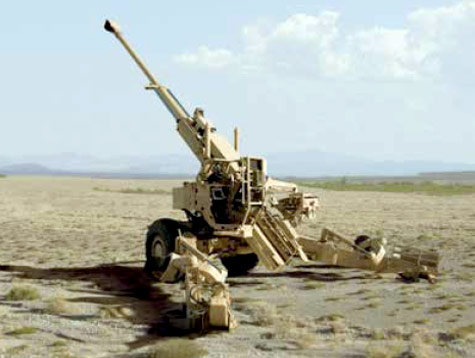
A contract for the acquisition of two regiments of the 12-tube, 300 mm Smerch multi-barrel rocket launcher (MBRL) system with 90 km range was signed with Russia’s Rosoboronexport in early-2006. The BrahMos supersonic cruise missile (Mach 2.8 to 3.0), with a precision strike capability, very high kill energy and maximum range of 290 km, was inducted into the army in July 2007. These terrain hugging missiles are virtually immune to counter measures due to their high speed and very low radar cross section. The indigenously designed and manufactured Pinaka multi-barrel rocket system is likely to enter service in the near future. These three weapon systems will together provide a major boost to the artillery’s ability to destroy key targets at long ranges. It is also time to now consider the induction of unmanned combat air vehicles (UCAVs) armed with air-to-surface missiles into the artillery for air-to-ground precision attacks.
Counter-bombardment (US term counter-fire) capability is also being upgraded, but at a slow pace. At least about 40 to 50 weapon locating radars (WLRs) are required for effective counter-bombardment, especially in the plains, but only a dozen have been procured so far. In addition to the 12 AN-TPQ 37 Firefinder WLRs acquired from Raytheon, USA, under a 2002 contract worth US $200 million, Bharat Electronics Limited is reported to be assembling 28 WLRs. These radars will be based on both indigenous and imported components and are likely to be approved for introduction into service after extensive trials that are ongoing. The radar is expected to match the capabilities of the Firefinder system and will have a detection range of about 40 km.
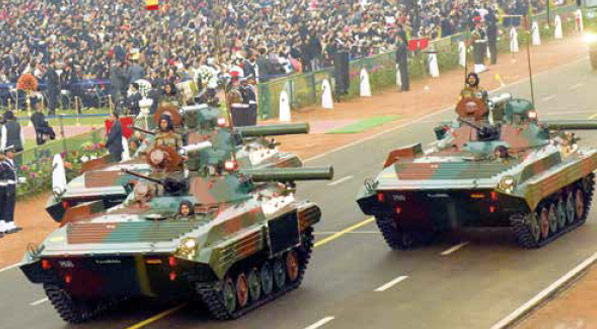
The Corps of Army Air Defence is also faced with serious problems of obsolescence. The vintage L-70 40 mm AD gun system, the four-barrelled ZSU-23-4 Schilka (SP) AD gun system, the SAM-6 (Kvadrat) and the SAM-8 OSA-AK have all seen better days and need to be urgently replaced by more responsive modern AD systems that are capable of defeating current and future threats. While the Trishul surface-to-air missiles have not yet been successfully fielded by the DRDO, the first Akash missile regiment was inducted into the army in May 2015. Manufactured by BEL, the missile has a range of 25 km. The short-range surface-to-air missile (SR-SAM) and medium-range (MR-SAM) acquisition programmes are embroiled in red tape. The first flight test of the long-range SAM (LR-SAM), being jointly developed in collaboration with Israel, was conducted in November 2014. Air defence is one area where the army has lagged behind seriously in its modernisation efforts.
Army Aviation: Obsolete Helicopters need to be Replaced
The modernisation plans of the Army Aviation corps have also not made much headway. According to the Standing Committee on Defence report tabled in Parliament in April 2012, there is a huge shortage of helicopters with the Army Aviation corps. The army faces a shortage of 18 Cheetah, 76 Advance Light Helicopters (ALH) and 60 ALHs with weapon systems. The corps has acquired a small number of Dhruv ALH but still lacks medium lift helicopters that are critical for the mountains. The total requirement of ALHs is about 150 to 160. The new NDA government has cancelled the RfP for 197 light utility helicopters and approved the project for indigenous development under the ‘buy and make Indian’ category. While this decision will give a boost to Indian aviation industry, it is bound to delay the acquisition by at least five to seven years.
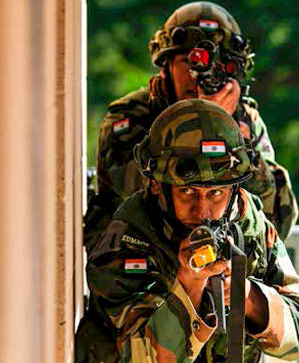
The positive development is that a few army aviation brigade bases have been raised recently for better coordination of aviation operations, particularly in operational areas like Ladakh where the daily demand is very high. The army plans to acquire attack helicopters for close air support. The acquisition of six Apache helicopters from the US has been approved.
Force Multipliers for the Infantry
The modernisation plans of India’s cutting edge infantry battalions, which are aimed at enhancing their capability for surveillance and target acquisition at night and boosting their firepower for precise retaliation against infiltrating columns and terrorists holed up in built-up areas, are moving forward but at a snail’s pace. The army has initiated a project to equip all its infantry battalions with a system that had for long been called the Future Infantry Soldier as a System (F-INSAS). The new system will be a force multiplier and will include a modular weapon with a thermal imaging sight, UBGL and Laser range finder that will replace the INSAS rifle, a combat helmet equipped with a head-up display and communications head set, a smart vest with a body monitoring system, a back pack with integrated GPS and radio and protective footwear. The new combat system is expected to be built indigenously with COTS components being imported. It resembles the US Army Land Warrior system and is expected to cost over Rs 25,000 crore to equip 350 infantry battalions. Plans also include the acquisition of hand-held battlefield surveillance radars (BFSRs), and hand-held thermal imaging devices (HHTIs) for observation at night. Stand-alone infra-red, seismic and acoustic sensors need to be acquired in large numbers to enable infantrymen to dominate the Line of Control (LoC) with Pakistan and detect infiltration of Pakistan-sponsored terrorists.
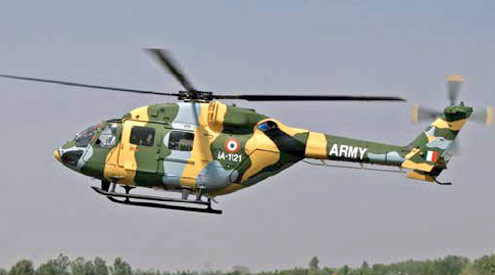
However, bullet proof jackets in sufficient numbers and modern assault rifles continue to elude the army. A project with an outlay of approximately Rs 10,000 crore for the induction of 1,78,000 new-generation assault rifles was initiated, but has not made much headway.
Concluding Observations
The lack of progress in the replacement of the army’s obsolescent weapons and equipment and its qualitative modernisation to meet future threats and challenges is a cause for concern. The mechanised forces in the plains are still partly night blind and the capability to launch offensive operations in the mountains continues to remain inadequate to deter conflict. The capability to launch precision strikes from ground and air-delivered firepower, which will pave the way for the infantry to win future battles, is much short of the volumes that will be required. The army also needs to upgrade its rudimentary C4I2SR system and graduate quickly to network centricity to optimise the use of its combat potential.
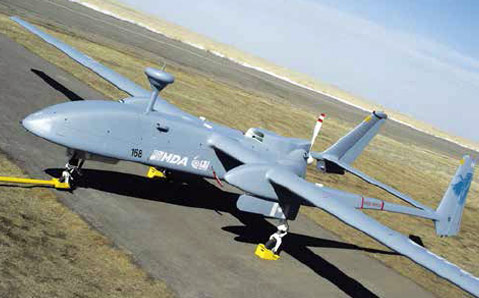
While India’s military modernisation has been stagnating, China’s People’s Liberation Army (PLA) and its sister services – the navy, the air force and the nuclear strike force the Second Artillery – have been modernising at a rapid pace for almost two decades, backed by a double-digit annual hike in the defence budget. At US$ 106 billion, China’s official defence budget for the current year is US$ 131.57 billion (Yuan 808.23 billion), 12.2 per cent more than the previous year and it is over three times India’s planned defence expenditure. As China invariably conceals many items of expenditure on security, its actual expenditure is likely to be over US$ 160-170 billion.
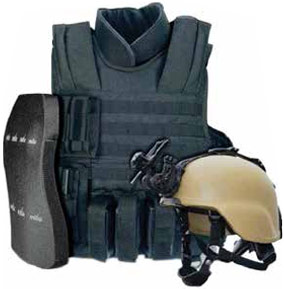
Despite the long list of obsolescent weapons and equipment in service with the Indian armed forces, the present military gap with China is quantitative rather than qualitative. In case India’s military modernisation continues to stagnate, this gap will soon become a qualitative one as well. By about 2020-25, China will complete its military modernisation and will then be in a position to dictate terms on the resolution of the territorial dispute if India continues to neglect defence preparedness.
To enable the army to fight and win the nation’s future wars in an era of strategic uncertainty, the government must give a major boost to the army’s modernisation drive. The army’s modernisation plans require substantially higher budgetary support than what has been forthcoming over the last decade. The defence budget must go up from the present 1.60 per cent of the GDP to 2.0 to 2.5 per cent. Also required is the speeding up of the weapons and equipment acquisition process and the simultaneous upgradation of recruitment standards and, consequently, personnel skills so as to be able to absorb high-tech weapons systems. Doctrine, organisation and training standards will need to keep pace with technological modernisation to make the Indian army a 21st century force to be reckoned with.
The writer is Distinguished Fellow, Institute for Defence Studies and Analyses (IDSA), New Delhi. 2,280 words. Approximately 1,700 words if the highlighted portions are deleted.









